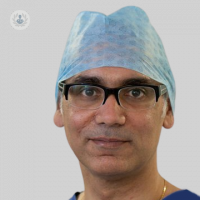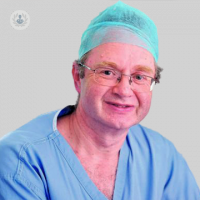Vasovasostomy (vasectomy reversal)
What is a vasovasostomy?
A vasovasostomy is a microsurgical procedure to reverse a vasectomy. A vasectomy is a permanent method of contraception. It is a surgical procedure to prevent sperm from travelling from the man’s testicles to his penis, making it impossible for sperm to enter a woman during intercourse, thereby preventing any potential pregnancy from occurring.
This is achieved by cutting, blocking, or tying the vas deferens – the tubes that carry sperm out of the testicles where they are made. A vasovasostomy reverses this process by reconnecting or unblocking the vas deferens to once again allow sperm to pass through.

Why is a vasovasostomy done?
Vasovasostomies are performed to try to restore fertility. While the original vasectomy may have been performed because the man and his partner wanted to avoid any future pregnancies, a vasovasostomy may be an option for those men who change their minds, either because they and their partner now want a child, or because the man has since entered into a different relationship and he and his new partner want to start a family.
What does a vasovasostomy involve?
Before a vasovasostomy is performed, the surgeon first examines the vas fluid under a microscope to check that it is good quality. This is apparent if it is clear and contains completely formed, healthy sperm. If the sperm are observed to be motile, this gives the procedure a better chance of restoring fertility.
The patient is put under general anaesthetic. In some cases, the procedure may be performed with local anaesthetic such as an epidural. The urological surgeon then enters the scrotum and reconnects the severed ends of the vas deferens, taking care to ensure a good blood supply and watertight sutures. If the sutures are too large and the connection is not watertight, the vasovasostomy can fail.
How successful are vasovasostomies?
Vasovasostomies can restore fertility in some cases, but not all. The longer the time between the vasectomy and the reversal procedure, the lower the chance of success. This is because the body tends to develop anti-sperm antibodies after a vasectomy, which are thought to lower sperm motility.
Other potential obstacles to achieving pregnancy after a vasectomy and subsequent vasovasostomy include blockages in the vas deferens and factors with the female partner.
What are the main alternatives to a vasovasostomy?
Another type of vasectomy reversal procedure is a vasoepididymostomy, which is more technically demanding than a vasovasostomy and involves connecting the severed vas deferens directly to the epididymis (the tube connecting the testicle to the vas deferens, where immature sperm are stored until they develop the ability to swim and fertilise an egg).












